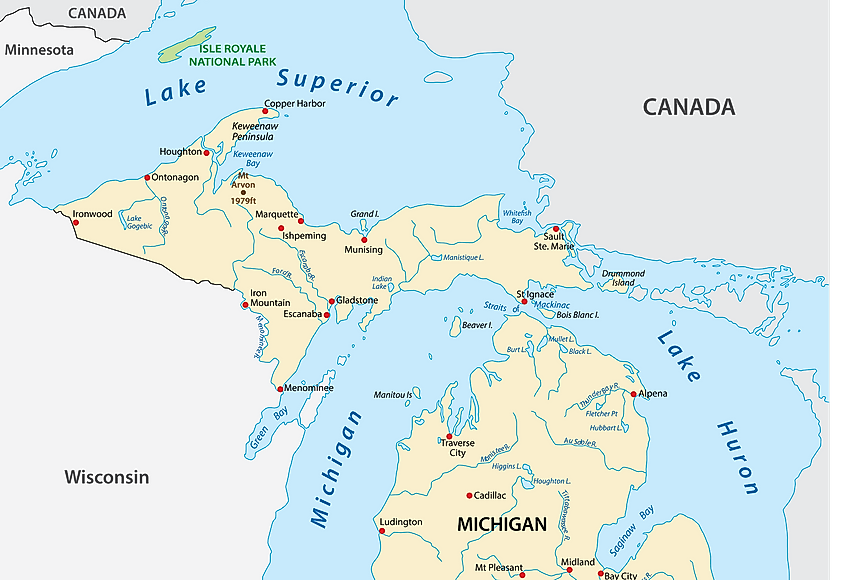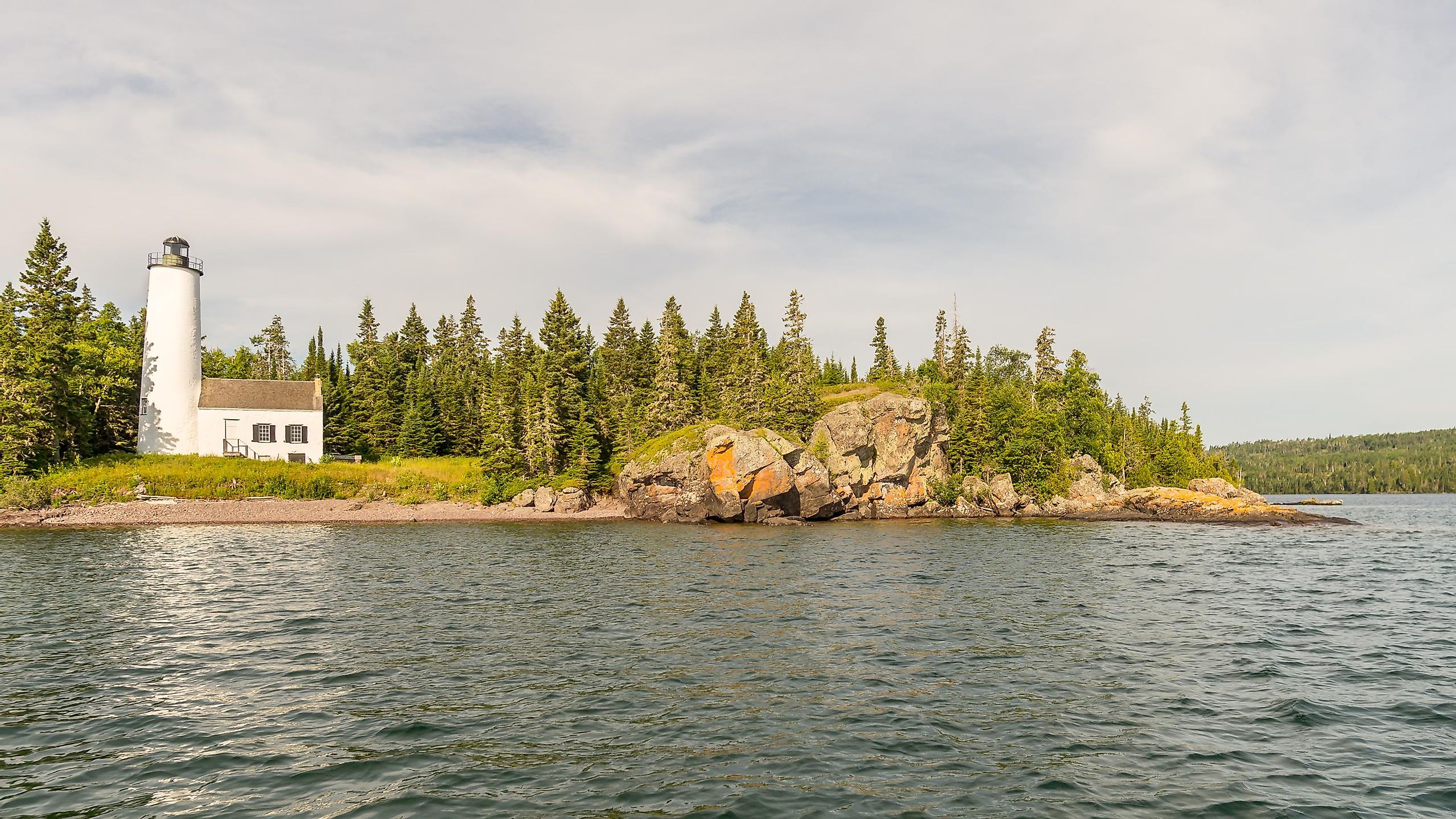
Isle Royale
A lake island is an island situated in a lake, making it a kind of inland island. They can be formed through various processes like sedimentation, volcanic activities, etc. Covering an area of 535.4 km2, Isle Royale is a lake island located in the far northwestern corner of Lake Superior belonging to the US state of Michigan. Isle Royale is positioned between the Keweenaw Peninsula and the Canadian province of Ontario. It is located about 90 km from the tip of the Keweenaw Peninsula on Michigan’s Upper Peninsula, and about 24 km from Ontario.
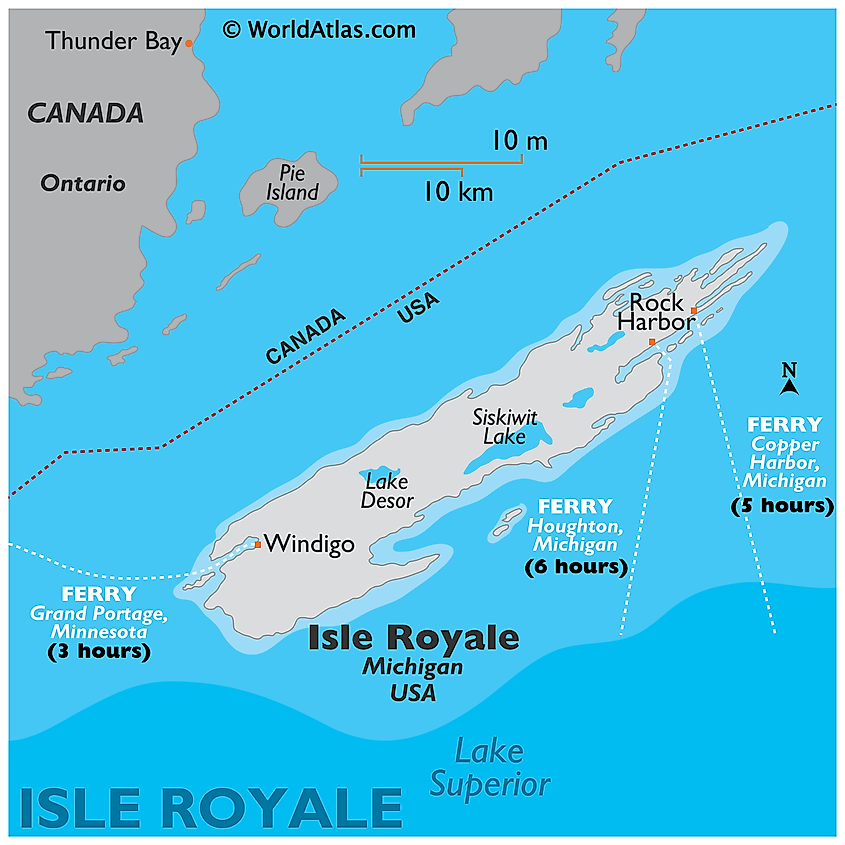
Geography
The island measures about 72 km in length and has a maximum width of about 14 km. Isle Royale is the world’s fifth-largest lake island and also Lake Superior’s largest natural island. The island is administered as a part of Michigan’s Keweenaw County and is considered to be the third-largest island of the 48 contiguous states of the United States. Located at an elevation of 425 m, Mount Desor is the highest point on the island. Isle Royale island also contains many ridges among which the Greenstone Ridge is the most prominent. Together with 450 surrounding smaller islands and islets, the Isle Royale island forms a part of the Isle Royale National Park.
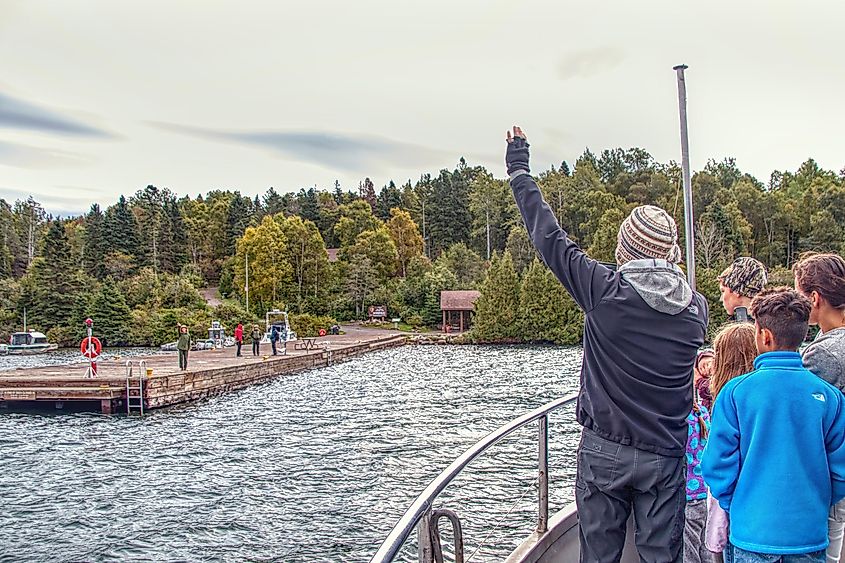
Established in 1940, the Isle Royale National Park encompasses a total area of 2,320 km2 and has been designated as an International Biosphere Reserve by UNESCO since 1980. This island National Park is open for visitors from mid-April to October 31st and remains closed during the winter months. It is one of the least-visited national parks in the United States.
Isle Royale hosts its own lakes, the notable of which are Siskiwit, Chicken Bone, Desor, Feldtmann, Ritchie, Sargent, and Intermediate Lake. Siskiwit Lake is the largest lake on Isle Royale island. This lake in turn contains numerous islands, among which Ryan Island is the largest.
As of the US census of 2000, there are no permanent residents on Isle Royale.
Brief History
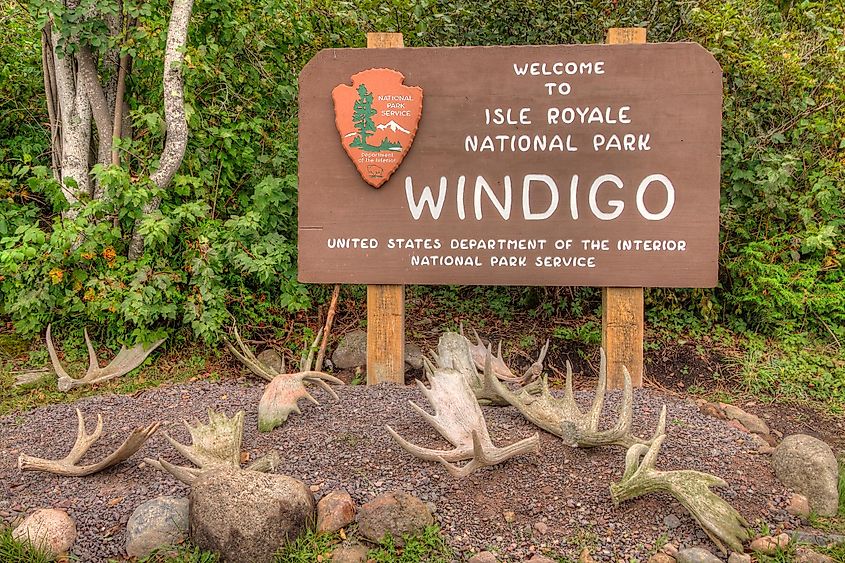
The French explorer Étienne Brulé was the first non-Indigenous person to visit the island in 1622. The island was initially named Minong by the local populations but was later renamed by Jesuit missionaries as Isle Royale in the honor of their royal patrons. The island was given to the United States by Great Britain through the Paris Treaty of 1783, but it was not until 1842 that the United States occupied it, displacing the Indigenous Ojibwa tribes that considered it their territory.
Several carbon-dating studies have revealed that huge quantities of copper have been mined from Isle Royale and the Keweenaw Peninsula since prehistoric times. About 4,000-year-old copper-mining pits and 20 m-deep trenches have been discovered throughout the island. During the 19th century, commercial copper mining was undertaken and modern copper mines were opened on the island. The waters surrounding the island were also commercially fished during the same period. The island became a popular resort area by the early 20th century and in the mid-20th century, through the dedicated efforts of various conservationists, the island became a part of the Isle Royale National Park.
Wildlife
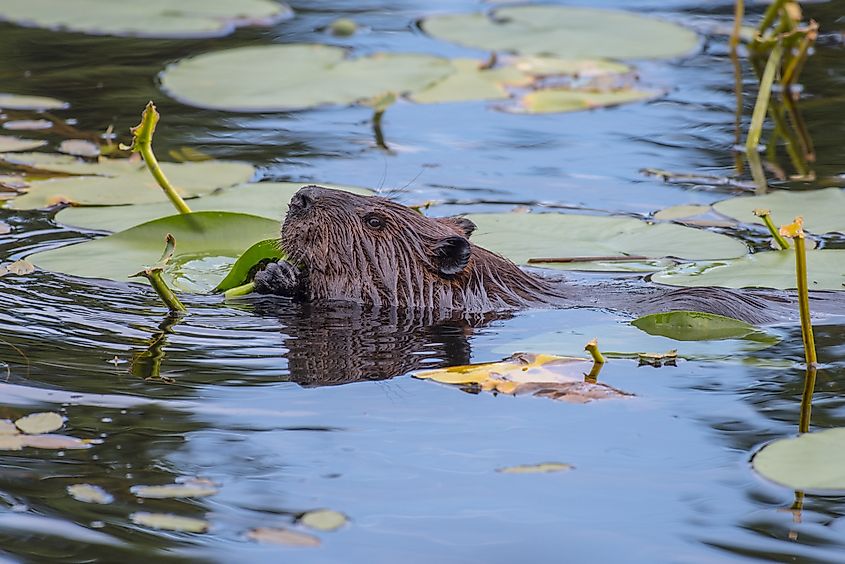
Isle Royale island hosts a wide range of habitats among which boreal forests are the most widespread. The island has been extensively used by ecologists for behavioral studies, mainly to observe the predator-prey relationships between eastern timber wolves and moose. Some of the common mammals that are found on the island include the boreal woodland caribou, beaver, bat, Canadian lynx, ermine, eastern timber wolf, fox, mink, muskrat, moose (Alces alces), and red squirrel.
Some of the notable fish in and around Isle Royale Island include the coaster brook trout, northern pike, yellow perch, lake trout, lake whitefish, minnow, rainbow smelt, etc. Amphibians like wood and mink frogs, salamanders, and newts are also found on the island. The common garter snake and the northern red-bellied snake are the only two snake species that are found on the island. The western painted turtle is also the only species of turtle that is found here. The common avian species that are found on the island include the white-throated sparrow, sandhill crane, herring gull, warbler, loon, etc.
Tourism
Isle Royale is an ideal location for many recreational activities like boating, backpacking, canoeing, kayaking, and hiking. About 270 km of hiking trails can also be found on the island. The island lacks roads and therefore the use of wheeled vehicles is not permitted here. The island can only be accessed by ferries, private boats, and seaplanes from Copper Harbor and Houghton, Michigan, and Grand Portage, Minnesota. These ferries land at Rock Harbor, which is situated in the eastern part of the island.
